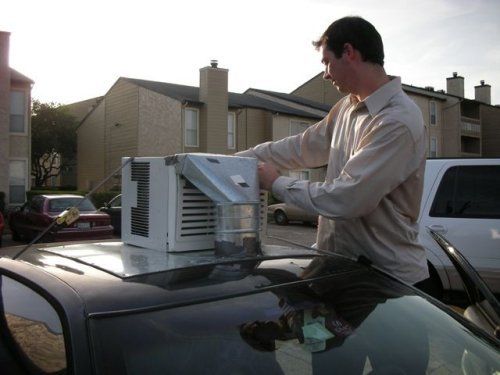10 tips to save gas in Murrieta and Temecula
- By JM Consulting
- •
- 22 Aug, 2017
- •

When looking for a new car, or even just researching problems with your current one, you may hear a lot about front-wheel drive or all-wheel drive. But you might not know exactly what they mean or understand the difference between them. We’re here to help.
There are actually four different layouts: rear-wheel drive, front-wheel drive, four-wheel drive and all-wheel drive. In all these cases, the wheels mentioned are the ones that receive the power from the engine — these are called the drive wheels.
Let’s look at the differences and figure out which might be best for your situation.
Common vehicle drive types
After decades dominated by rear-wheel drive vehicles, front-wheel drive began to take over in the 1980s. At one point, Ford became the only American manufacturer still producing a rear-wheel drive sedan. Police departments and the limousine industry seemed to be the main buyers, as Crown Victorias and Lincoln Town Cars seemed to have a monopoly.
Today, you can find a few more options with drive wheels in the back, but it’s still a rarity. The exception is the modern muscle car, where traditional rear-wheel drive is part of the allure. Almost everything else is either front- or all-wheel drive, with a few four-wheel drives thrown in for good measure. Each layout has its pros and cons.
Rear-wheel drive
Many performance cars, luxury cars and pickup trucks are rear-wheel drive. This layout places the drive wheels at the back of the vehicle. The engine and transmission are mounted at the front, and a drive shaft connects the engine and transmission to the rear axle.
Pros
Handling: Almost all sports cars and luxury cars are rear-wheel drive for one reason — handling predictability. Rear-wheel-drive cars have two distinct handling characteristics: they either oversteer or understeer. Understeer is when you try to turn sharper than your speed will allow and the car pushes the front tires straight. Oversteer is when you try to turn sharper than your speed will allow and the back of the car swings around and passes you. Most rear-wheel drive cars use understeer for safety. If a manufacturer finds that a car tends to oversteer, it can change the recommended tire pressure to create understeer instead.
Weight savings: Another positive of rear-wheel drive is that it’s lighter than four-wheel or all-wheel drive. This is particularly important in the light truck market. A rear-wheel-drive half-ton truck can weigh 600 to 1,000 pounds less than the same half-ton 4x4 version. Go up to a one-ton truck and the weight savings can exceed 2,000 pounds. If you don’t drive in snow or off-road, the rear-wheel drive truck will save you thousands of dollars on fuel over the life of the truck.
Payload capacity: The extra weight over the rear wheels increases payload and towing capacity, a desirable trait in pickup trucks.
Cons
Traction: Rear-wheel drive vehicles have extremely poor traction in the rain and snow. The wheels slip in these conditions, making it easier to get stuck or skid.
Rear-wheel drive is the layout to choose for on-road performance driving or high payload capacity.
Front-wheel drive
Most cars and many crossover SUVs are front-wheel drive. As the name implies, this layout puts the drive wheels at the front of the car. The engine and transmission are mounted between the front wheels.
Pros
Traction: Having the drive wheels under the weight of the engine and transmission allows the vehicle to get a good grip on the road. It’s very difficult to oversteer a front-wheel drive car, reducing the likelihood of spinning out.
Reduced weight and cost: The front-wheel drive arrangement reduces weight and cost by eliminating the extra parts associated with a rear-wheel drive vehicle — for instance, the drive shaft and stand-alone differential.
Fuel economy: Optimal fuel economy is derived from the front-wheel drive arrangement.
Cons
Performance: Most front-wheel drive vehicles suffer from a symptom called “torque steer.” Under heavy acceleration, this issue causes the vehicle to pull to one side, reducing handling — in fact, some early front-wheel drive cars could violently spin the steering wheel if the tires lost and then regained traction. For this reason, most high-performance cars are rear-wheel drive.
Suspension complexity: Since the front wheels have to both steer (turn left and right) and absorb road bumps (travel up and down), adding front-wheel drive also requires delivering turning force to the wheels, not to mention braking. All these factors add a lot of complexity to the front suspension. Still, front-wheel drive does all these things while reducing the overall weight compared to any other drive type.
Front-wheel drive is best for everyday driving. It does well in foul weather (although not as well as four-wheel drive or all-wheel drive) and provides exceptional economy and value. Driving front-wheel drive in snow takes practice. Take the time to try it in a safe place before using it on the street.
Four-wheel drive
When the going gets tough, you need four-wheel drive (otherwise known as 4x4 or 4WD). This layout sends power to the front and rear wheels in equal proportions for increased traction off-road and in the snow.
A transfer case mounted behind the transmission splits engine power and sends it to both front and rear drive axles. The design can be either full-time or part-time. Part-time allows the driver to switch between rear-wheel drive and four-wheel drive manually. Pickup trucks and SUVs are often offered with four-wheel drive. Some heavy-duty four-wheel-drive designs require manual or automatic devices to connect the front wheel hubs to the axles.
Pros
Off-road capability: Four-wheel drive vehicles offer unsurpassed off-road capability.
Payload and towing capacity: Because of their heavy-duty suspensions, four-wheel drive vehicles provide a greater payload and towing capacity than their two-wheel drive counterparts. It’s the best and safest choice for off-road towing.
Diesel compatibility: The constant weight of four-wheel drive and low gearing common in 4x4 vehicles is an ideal match for the torque of a diesel engine.
Cons
Reduced fuel economy: The extra components added onto four-wheel drive vehicles increase their weight. As a result, fuel economy suffers.
Additional service: Four-wheel drive vehicles have more parts than two-wheel drives. This leads to more frequent repairs and service.
Cost: Four-wheel drive vehicles cost more than two-wheel drives. Automatic four-wheel drive actuators are prone to failure if they’re never or rarely used. If you’re only going to use it, say, once a year, you would be better off renting a four-wheel drive vehicle for that occasion. You’ll buy a less expensive car, and you won’t have to worry so much about it breaking in a place where you can get stuck.
Higher center of gravity: The complexity of parts required to make a vehicle four-wheel drive usually requires a taller ride height and will raise the center of gravity. This can increase the chance of rollover.
Four-wheel drive is the layout of choice for off-roading and driving in heavy snow.
All-wheel drive
All-wheel drive vehicles have a center differential and/or viscous clutch to transfer torque between the front and rear axles. It works continuously; you don’t have to do anything to engage it. All-wheel drive (AWD) is found mostly on light-duty SUVs and as a more pricey option on some cars.
The first, most notable usage of this was the Audi Quattro system. The viscous drive unit proportionately applies the power to the wheels that have the most traction. None of the other drive types do this. Torque goes where it does the most work, accelerating the car forward or around corners. Most manufacturers have adopted and adapted this type of full-time all-wheel drive.
All-wheel drive is by far the best choice if you have to regularly do both on-road and off-road driving, though four-wheel drive is still king for extreme off-road conditions.
Pros
On-road traction: Nothing beats all-wheel drive for on-road traction, especially in foul weather.
No driver intervention needed: The layout allows the vehicle to stay in constant contact with the pavement without input from the driver.
Cons
Reduced fuel economy: The extra components added onto all-wheel drive vehicles increase their weight. As a result, fuel economy suffers.
Additional service: All-wheel drive vehicles have more parts than two-wheel drives. This leads to more frequent repairs and service.
Cost: All-wheel drive vehicles cost more than two-wheel drives.
All-wheel drive is perfect for use on wet and snowy roads but doesn’t provide enough traction for heavy-duty off-road use.
So, which one is right for you?
The answer to this largely depends on the weather where you live, and the type of driving you do.
If you live in a place where it never snows and doesn’t rain much, and you stick to the paved roads, a rear-wheel-drive vehicle is fine. Additionally, if you need to haul a lot of equipment, a pickup with rear-wheel drive is right for you.
If you don’t do a lot of off-roading but do have to put up with moderate snow and wet weather, or if you want the best fuel economy, front-wheel drive is the way to go.
If you don’t care as much about fuel economy but have to deal with snow, rain and other bad weather, an all-wheel drive vehicle might make the most sense.
And if you love off-roading or live in a place with extreme winters, four-wheel drive makes the most sense.

Whether it’s rain, snow or sleet, you depend on the windshield wipers to help you drive safely in inclement weather. Let’s look at the issues that keep windshield wipers from doing their job.
If your wipers are smearing: This can often be resolved with a good cleaning of your windshield or some replacement wiper blades.
If
your wipers aren’t moving: With the car off, try to manually move the
wipers back and forth. If they don’t budge, it is likely an electrical
problem. If you can move them freely, you may have a mechanical issue.
(This is a good time to bring your vehicle in to the repair shop for
help!)
https://repairpal.com/symptoms/windshield-wipers-not-working

If you use your car for business — even just part of the time — the government may pick up some of the tab for your auto repairs during tax season. To determine if you can write off your automotive repairs, start with these three questions:
- Is my car a business vehicle?
-
What counts as a deductible repair?
-
Which deduction method should I use?
Visit our partner RepairPal for help answering these questions: https://repairpal.com/blog/car-repairs-tax-deductible
Take the driver seat on any late model car on the road today, and you will see that the dashboard is filled with different warning lights. and if that ain’t enough, there are buzzers that alert the driver of anything that needs prompt attention, or worse, signal when engine damage may be inevitable unless the car is pulled over. Car engineers have an eye for detail though on how any driver potentially reacts when one of those warning lights turn on, so there’s no cause for panic if a “check engine” light menacingly turns on or a buzzer alerts you of something wrong.
At Murrieta Auto Repair, we have seen these common problems from our customers whose cars we have promptly serviced. Yes, there are “false alarms” (read: faulty electronics) with these warning lights but quite a few warrant a complete engine check to see if that car needs to be serviced as soon as possible or ignoring these light might compromise passengers’ and vehicle safety.
In the not-so-distant past, it was very tricky to diagnose check engine light or warning light problem. It needed the observation of the driver when does the problem happen and how often, if warning lights turn on certain periods during the engine is started. Today, the ‘guesswork’ has been removed with the advent of diagnostic and troubleshooting equipment and software.
At Murrieta Auto Repair, we have the tools, hardware and software to accurately diagnose any problem so that we could get at the root of the problem that makes the check engine light (or any warning light) turn on.
The check engine light or the service-engine-soon lights are like traffic signals. The red ones that light up means that you have to pull over to a safe area of the road, stop the engine immediately and do a check under the hood.
Common problems that often cause red warning lights to go off are:
The state of California has one of the toughest criteria when it comes to smog checks than any country in the world or US state. This is not something we just made up as it is stated plainly on the DMV California website in its Smog Check FAQ’s page
“ Currently, smog inspections are required for all vehicles except diesel powered vehicles 1997 year model and older or with a Gross Vehicle Weight (GVWR) of more than 14,000 lbs, electric, natural gas powered vehicles over 14,000 lbs, hybrids, motorcycles, trailers, or gasoline powered vehicles 1975 and older…”
So if you have a car or any four-wheeler that’s not older than the 1997, you are required to have one. Not just only one but twice a year or biennial for some California counties. ( please refer to DMV California page).
No unnecessary stress on your part, valued vehicle owner; we at Murrieta Auto Repair will share some time-tested “tactics” that will help you pass the smog check on the first try!
Here are the three things you must do before having your vehicle smog-checked:
It’s no exaggeration that having a car (or any other vehicle) is an investment. Vehicle owners need to have it on top of their minds that a positive driving experience can only happen if the vehicle that’s in your garage (or used for your business) is well-maintained. But, “well-maintained” here does not equal to high prices on replacement parts and services or taking out a personal loan just to finance that emergency repair.
Preventive (or periodic) maintenance is the key so your car, truck, daily driver; or valued import or classic, runs and drives like it just rolled off the car dealership yesterday.
We, at Murrieta Auto Repair, are on a mission to provide everyone in Murrieta and nearby areas of Riverside County, the best services and quick repairs that we are becoming known for. And not only that, inform you, our valued customers, on ways to save on vehicle repairs and not get scammed.
The Top 5 Scams that other auto repair shops pull on their clients are:

“It’s tough to keep your cool when the inside of your car is full of hot air from a malfunctioning air conditioning (A/C) system. According to the Car Care Council, an annual checkup of your vehicle’s A/C system will help prevent it from breaking down when you need it most, especially as sky-high temperatures are hitting many parts of the country.
“Getting stuck in traffic is hard enough but getting stuck in traffic during the heat of summer without properly functioning A/C is the pits,” said Rich White, executive director, Car Care Council. “It is important to always have the A/C system properly maintained to keep it in tip-top shape and avoid costly repairs down the road.”
A vehicle’s heating, ventilating and air conditioning system (HVAC) keeps the interior cabin comfortable in any season by providing the right temperature and humidity level. Typical A/C service consists of the following steps:
A service technician checks pressures to test operation, refrigerant charge and outlet temperatures.
If the system is found to be low on refrigerant, a leak test is performed to find the source of the leak. Keep in mind that if your vehicle is leaking refrigerant, it is damaging the ozone layer.
Refrigerant may be added if necessary to “top off” the system, although some states do not allow “topping off.”
A technician may also check for evidence of refrigerant cross-contamination, which is the mixing of refrigerants.
A/C service should also include a check of the compressor’s drive belt and tension.
“Checking the A/C once a year is key to making sure your cooling system is running efficiently all year long,” White said. “A properly running HVAC system will help improve your gas mileage, is more environmentally friendly and will keep you from losing your cool on the road.”
The Car Care Council is the source of information for the “Be Car Care Aware” consumer education campaign promoting the benefits of regular vehicle care, maintenance and repair to consumers. For a copy of the council’s Car Care Guide or for more information, visit www.carcare.org. ”
Making Murrieta and Temecula a little more green through proper auto repair practices.
We here at Murrieta Auto Repair strive to go green in every way possible, from our parts washer being eco friendly, “The SmartWasher” to ALWAYS properly disposing of our waste oils and even our biodegradable soy based hand cleaner all our employee’s use! See how you can also make your vehicle a little more green!


